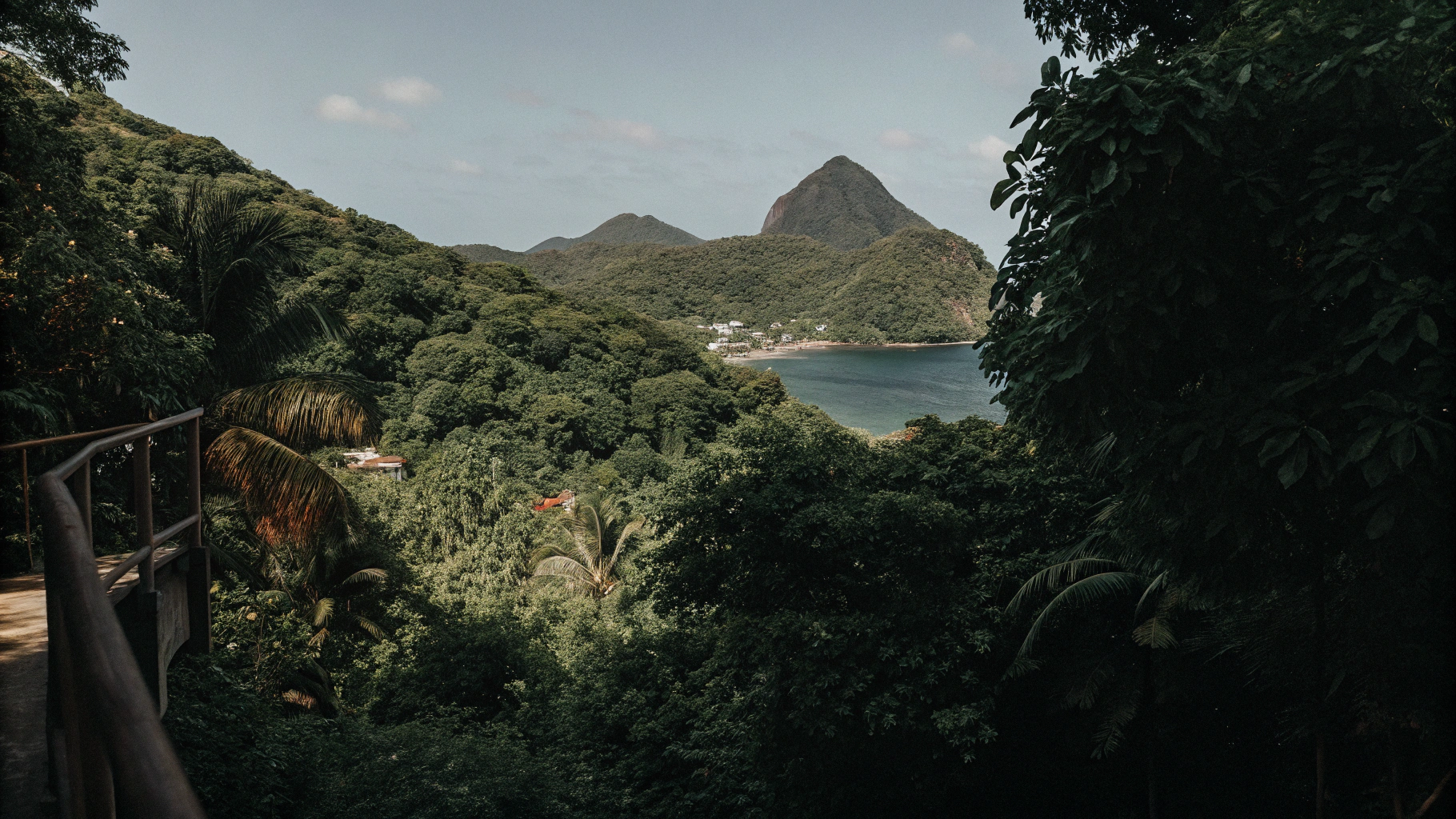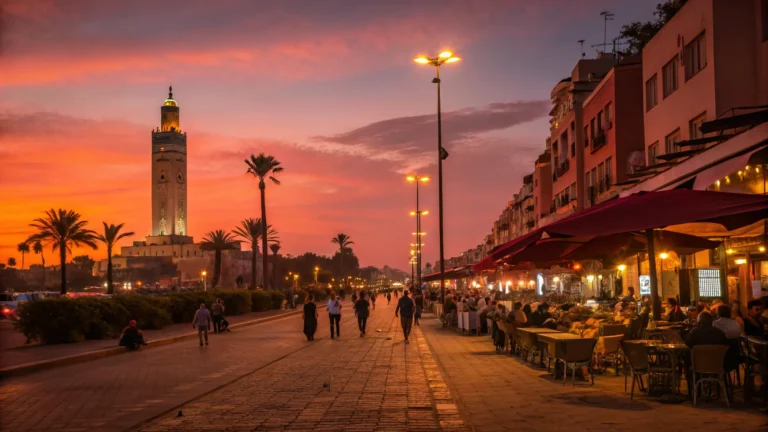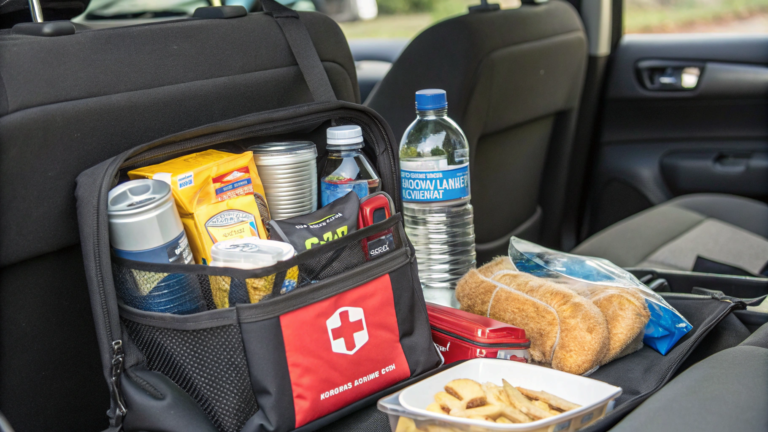Best time to go to St Lucia 6 secrets locals won’t share
Last updated on June 17th, 2025 at 05:41 pm
My first trip to St. Lucia, even though it wasn’t the best time to go to St Lucia, was a disaster. Complete disaster.
It was March 2018, and I’d followed every piece of advice from the travel blogs. Peak season? Check. Five-star resort? Check. Booked six months in advance? Double check. I figured I’d done everything right.
Wrong.
I spent three days fighting crowds at every beach, paying $15 for cocktails that tasted like sugar water, and watching the same sunset cruise packed with 200 other tourists taking identical photos. The “authentic” cultural tour felt like dinner theater. Even the locals seemed tired of us.
On my last night, I was sitting alone at a beach bar in Rodney Bay when this older guy named Carlton struck up a conversation. He’d been born on the island 67 years ago and worked everything from fishing boats to hotel management. After listening to me complain about my expensive disappointment, he just laughed.
“Mon, you came at the worst possible time,” he said. “March is when we locals disappear. Too many cruise ships, too many people who don’t know how to enjoy the island properly.”
That conversation changed everything. Carlton introduced me to his nephew Jerome, who runs fishing charters. His sister-in-law Maria, who grows the best mangoes I’ve ever tasted. His neighbor Paul, who knows every hiking trail and waterfall on the island.
Over the next four years, I’ve been back to St. Lucia eight more times. Each trip taught me something new about when this island really shines – and when you should probably stay home.
These aren’t secrets you’ll find on TripAdvisor or in guidebooks. They’re insights that come from Sunday dinners with local families, early morning fishing trips with guys who’ve worked these waters for decades, and lazy afternoons learning about island life from people who actually live it.
Here’s what they taught me about the best time to go to St Lucia – secrets that locals don’t share with tourists because, honestly, most tourists never bother to ask.
Table of Contents
The Weather Story They Don’t Tell You About the Best Time to Go to St Lucia
Forget what you’ve read about St. Lucia’s weather. The whole “dry season good, wet season bad” thing is nonsense that someone made up to sell more January vacations.
Carlton’s friend Winston has been running weather observations for the island’s agricultural department since 1987. He showed me rainfall records that tell a completely different story than what you see online.
“People think wet season means rain all day,” Winston told me over coffee at his house in Castries. “But our rain usually comes in the afternoon, lasts an hour, then everything’s beautiful again. Meanwhile, dry season can be hot as hell with no breeze for days.”
Here’s what thirty years of actual weather data shows:
Real Temperature Patterns:
- December-February: 81-83°F (everyone’s here, but it’s not actually the coolest time)
- March-May: 83-86°F (this is the sweet spot, but tourists leave in April)
- June-August: 86-88°F (hot but manageable with afternoon rain cooling)
- September-November: 85-87°F (perfect weather returns, nobody knows)
The Humidity Truth: Humidity stays between 75-82% year-round. The difference between “dry” and “wet” season humidity? Maybe 5%. You won’t notice it.
Trade Wind Reality: The northeast trade winds blow strongest December through April. Sounds good, right? Wrong. Those same winds make the Atlantic side of the island rough and choppy – terrible for swimming or snorkeling. During “wet season,” the winds calm down and the east coast becomes gorgeous.
Maria, who runs a small guesthouse near Dennery on the Atlantic side, put it perfectly: “Tourists pay the most money to come when my beach is too rough to enjoy. Then they leave right when it gets perfect.”
Secret #1: May is Pure Magic (And Empty)
Every local I know says the same thing: May is the best month to visit St. Lucia. Not April (too many spring breakers still around), not June (getting too hot). May.
I tested this in May 2020, right when COVID restrictions lifted. Even accounting for the pandemic, the difference was stunning.
Why May Works: The weather sits in this perfect sweet spot – dry season ending, wet season not started yet. You get 85-degree days with maybe two or three light rain showers for the entire month. The ocean is calm and clear. The hiking weather is perfect.
But here’s the real reason locals love tourists who come in May: we’re in good moods.
Jerome explained it while we were fishing at 5 AM (caught three mahi-mahi, by the way): “By March and April, we’re exhausted from peak season. Everyone’s cranky – the hotel workers, restaurant staff, tour guides, even us fishermen. Too many people, too much pressure. But by May, we’ve had a month to breathe. We remember why we love sharing our island.”
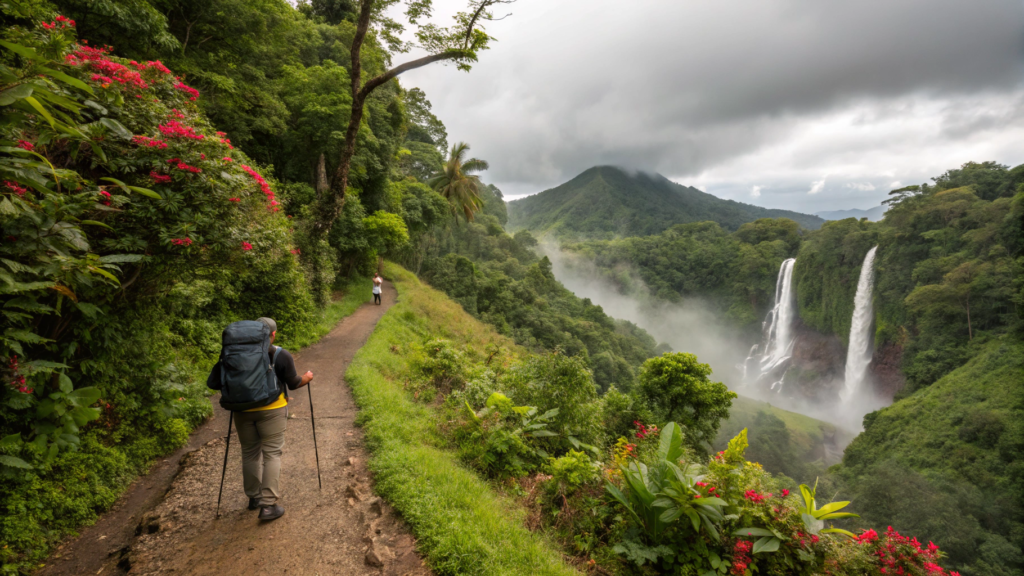

The May Advantage:
- Flight costs drop 40% from peak season rates
- Hotels offer shoulder season pricing (sometimes half the March rates)
- Restaurants aren’t packed – you can actually get good tables
- Local guides have time to show you things they can’t during busy season
- Beaches that were crowded in March are nearly empty
I paid $295 for a round-trip flight from Fort Lauderdale in May 2021. The same flight in February? $578. That’s almost $300 saved before you even land.
May Reality Check:
- Average daily high: 86°F
- Total monthly rainfall: 4.2 inches (spread over maybe 8-10 days)
- Ocean temperature: 83°F
- Tourist crowds: 70% lower than peak season
The only downside? Some hotels and restaurants take this time for maintenance and staff vacation. But honestly, that just means fewer mediocre tourist traps are open.
Secret #2: Hurricane Season is the Best-Kept Secret
I’m going to say something that’ll probably shock you: some of my best St. Lucia experiences happened during hurricane season.
September 2019. Hurricane Dorian was tearing up the Bahamas, and everyone thought I was crazy for being in St. Lucia. But Carlton had told me something important: “St. Lucia sits just far enough south to miss most hurricanes. We get the beautiful weather they create without the danger.”
He was right. That September trip was incredible.
The Hurricane Season Reality: I looked up the actual statistics with Winston (the weather guy). In the past 25 years, St. Lucia has been directly hit by major hurricanes exactly four times. Four times in twenty-five years. Your odds of getting stuck in serious weather are tiny.
Meanwhile, here’s what hurricane season actually gives you:
September-November Benefits:
- The island turns emerald green (dry season is brown and dusty)
- Waterfalls that don’t exist during dry season come roaring to life
- Marine life goes crazy – the diving and snorkeling are incredible
- Hotel rates drop 50-60% from peak season
- You get the island mostly to yourself
The afternoon rain showers? They’re the best part. Around 3 PM, these dramatic clouds roll in, it pours for 45 minutes, then you get the most incredible sunsets you’ve ever seen.


Hurricane Season Strategy:
- Buy comprehensive travel insurance (non-negotiable)
- Book hotels with flexible cancellation policies
- Download weather apps and actually use them
- Plan indoor activities for rainy afternoons (spas, museums, cooking classes)
- Embrace the drama instead of hiding from it
Paul, my hiking guide friend, summed it up perfectly: “Dry season is pretty. Hurricane season is spectacular.”
Secret #3: Carnival Never Really Ends (You’re Just Missing It)
Most tourists think St. Lucia has one carnival in July. Wrong. This island parties from February through August, with different communities celebrating at different times.
The problem? Nobody tells tourists about the village festivals, fishermen’s celebrations, and community carnivals that happen year-round.
I discovered this by accident in February 2021. Jerome invited me to his cousin’s wedding in Vieux Fort, and we stumbled into this amazing street festival. Steel bands, incredible costumes, families sharing food with strangers, kids dancing in the streets. Maybe fifty tourists in the whole crowd – the rest were locals having the time of their lives.
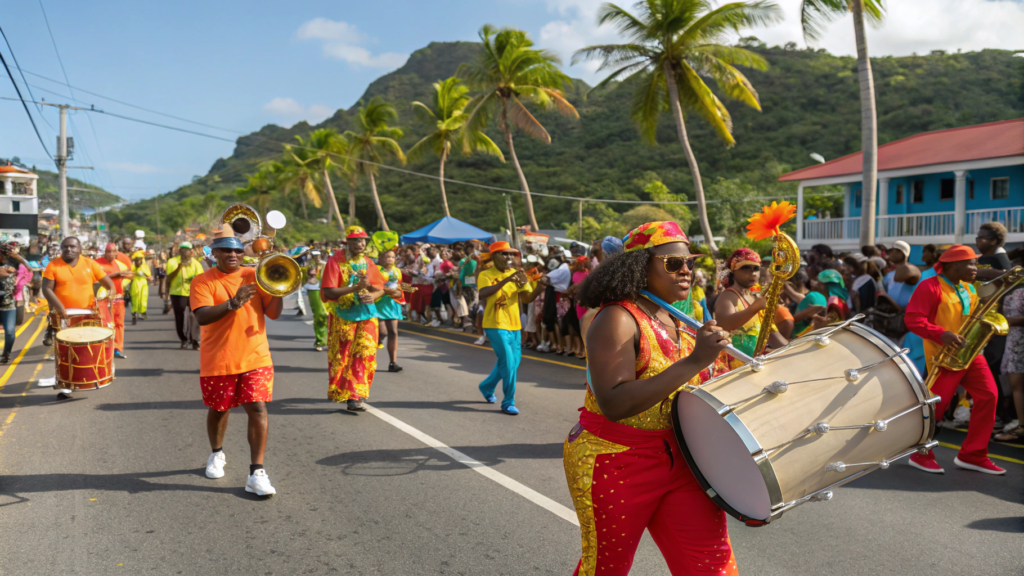

The Real Carnival Calendar:
February: Village carnivals in Dennery, Vieux Fort, and Micoud
- Smaller, family-friendly, incredibly authentic
- Local families often invite visitors to join their groups
- Food is homemade and amazing (not tourist prices)
March-April: Flower festivals throughout the island
- Different communities celebrate their local flowers and plants
- Perfect for families and photography lovers
- Usually combined with local food festivals
May: La Rose and La Marguerite festivals
- Traditional cultural celebrations dating back centuries
- Amazing traditional music and dancing
- Most tourists have no idea these exist
July: Official St. Lucia Carnival
- Biggest party, but also most touristy and expensive
- Still fun, but feels completely different from village celebrations
August: Fishermen’s Feast and community festivals
- Coastal communities celebrate their maritime heritage
- Best seafood you’ll ever eat
- Very local, very authentic
Maria’s neighbor invited me to the La Rose festival in Dennery in May 2022. We danced until 2 AM, ate fish broth that spoiled me for every other soup, and I made friends I still talk to today. Total cost? Maybe $20 for drinks and food.
Compare that to July’s official carnival, where a basic food vendor meal costs $15 and you’re surrounded by cruise ship tourists.
Secret #4: The Wildlife Schedule Nobody Mentions
This secret came from spending early mornings with local fishermen who’ve worked these waters their entire lives.
St. Lucia’s marine life runs on schedules that most tourists never learn about. Know the schedules, and you can see things that will blow your mind. Miss them, and you’ll wonder why everyone raves about the wildlife here.
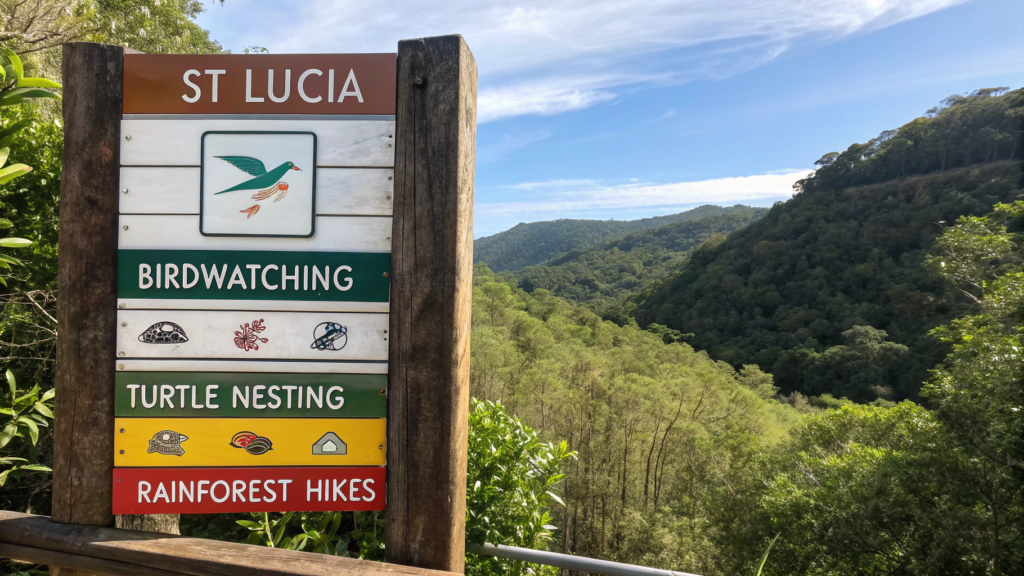

The Local Marine Calendar:
March-July: Leatherback turtle nesting Most tours take you to Turtle Beach (Reduit Beach), which is okay but crowded. Local secret? Grande Anse on the east coast is where the big females actually nest, and you’ll have the beach almost to yourself.
Jerome’s friend Marcus runs night turtle tours from Dennery. $25 per person, maximum eight people, and he knows exactly where the turtles come ashore. I watched a 400-pound leatherback lay her eggs just fifteen feet away. No crowds, no noise, no cruise ship tourists with flash cameras.
December-April: Humpback whale migration The whales pass close to shore on their way south. Best viewing is from the west coast between Soufrière and the Pitons. But here’s what locals know: whales are most active in calm weather during the early morning hours.
Year-round: Dolphins and pilot whales They follow the fishing boats in the afternoon, especially between 2-5 PM. Jerome takes me out with him sometimes, and we’ll have 30-40 dolphins playing around the boat.
April-September: Sea bird nesting season Frigate birds, brown boobies, and tropicbirds nest on the small islands off the coast. Paul knows hiking spots where you can watch them without disturbing the colonies.
Wildlife Timing Tips:
- Book with local fishermen, not resort tour desks
- Early morning (6-9 AM) is best for most wildlife
- Calm weather days are crucial – check forecasts
- Bring patience and respect for the animals
- Ask locals about recent sightings before booking tours
Secret #5: Harvest Seasons Change Everything
This insight came from Maria, who grows mangoes, breadfruit, and vegetables on her family’s land in the Roseau Valley. She taught me that St. Lucia’s food experiences completely revolve around what’s being harvested – something no restaurant or food tour ever mentions.
St. Lucia’s Hidden Culinary Calendar:
January-March: Cocoa harvest season This is when chocolate plantation tours are real, not just tourist shows. I visited Rabot Estate during harvest in February 2020 and helped pick cocoa pods, ferment beans, and make actual chocolate. The tour guide was the plantation manager, not some script-reading college kid.
April-June: Mango season madness Holy cow, the mangoes. Maria’s trees produce six different varieties, and she taught me how to tell when each one is perfectly ripe. Village markets overflow with mangoes selling for 50 cents each (versus $3 each in resort gift shops).
May-July: Breadfruit season Breadfruit season means incredible local dishes at family restaurants. Roasted breadfruit, breadfruit salad, breadfruit soup – stuff you’ll never find on tourist menus but locals eat constantly.
July-September: Spice harvest Fresh nutmeg, cinnamon, allspice, and bay leaves. The spice plantation tours actually show real harvesting instead of just pre-packaged demonstrations. Plus, this is when spices are cheapest and freshest at local markets.
October-December: Root vegetable season Sweet potatoes, yams, dasheen, tannia – this is when St. Lucian comfort food is at its peak. Family restaurants serve the most authentic traditional dishes during these months.
Food Experience Strategy:
- Visit during harvest seasons for authentic farm experiences
- Ask locals about family restaurants serving seasonal specialties
- Shop at village markets (Castries Saturday market is incredible)
- Learn some basic Creole food terms – locals really appreciate the effort
I spent a day with Maria during mango season in May 2021. We picked fruit, cooked lunch with her family, and she sent me home with a bag of mangoes that lasted a week. Total cost? She wouldn’t take any money, but I left $40 for her grandkids.
Compare that to the $95 “farm-to-table experience” at the resort that used imported produce.
Secret #6: Island Economics That Smart Travelers Use
This last secret took me years to understand: St. Lucia’s economy runs on tourism cycles that create opportunities if you know when to look.
Carlton explained it during one of our beach bar conversations: “Tourism businesses make their money during peak season, but they make their reputation during slow season. That’s when you get the real service, the personal attention, the extras they can’t afford to give when they’re packed.”
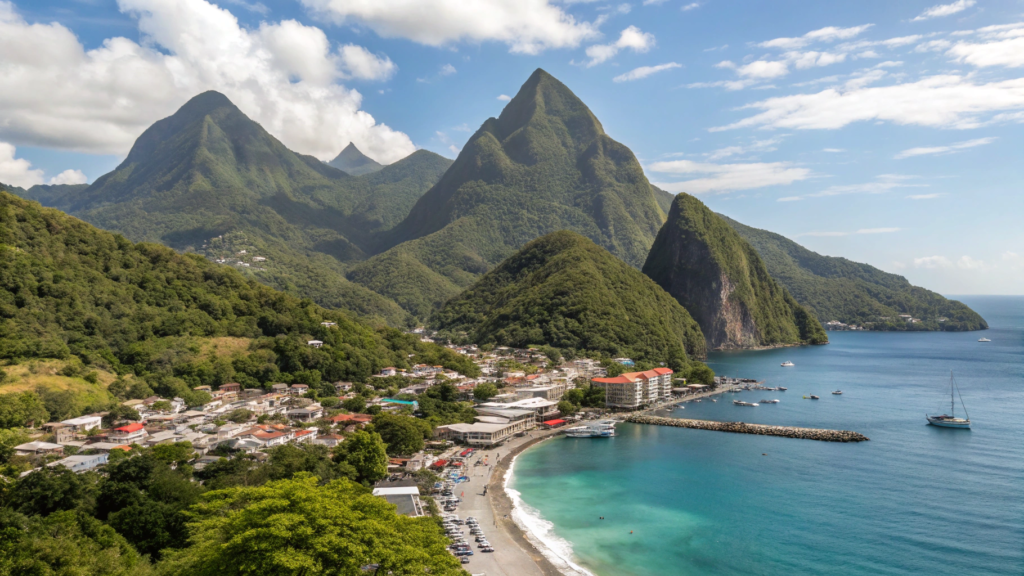

The Economic Sweet Spots:
April-May: Pre-summer hiring and training Hotels and restaurants hire seasonal staff and train them for summer business. Everyone’s motivated, service quality is high, but prices are still reasonable.
September-October: Post-hurricane recovery mode Even though hurricanes rarely hit St. Lucia directly, businesses still offer “recovery deals” to attract visitors back. It’s the best value of the year.
November: Peak season preparation Hotels test new services, restaurants try new menus, activity providers offer preview rates. You get new experiences at old prices.
Late January: Post-holiday cash crunch After the expensive holiday season, many businesses need cash flow and are willing to negotiate on rates and packages.
I learned this lesson in December 2019. Paid premium rates for mediocre service because everyone was overwhelmed and exhausted. Compare that to my November 2021 trip, where the same hotel upgraded my room, the restaurant chef sent out complimentary appetizers, and the dive shop threw in an extra tank at no charge.
Economic Timing Strategy:
- April-May for motivated service at reasonable rates
- September-October for the best deals of the year
- November for trying new experiences at preview pricing
- Late January for negotiating power on activities and accommodations
Your Perfect St. Lucia Game Plan
After nine trips and countless conversations with locals, here’s what I’ve learned: the best time to go to St. Lucia isn’t about perfect weather or perfect prices. It’s about perfect experiences.
For First-Timers: Go in May You’ll get classic St. Lucia weather with reasonable crowds and prices. Locals are in good moods, restaurants aren’t packed, and you can actually enjoy the popular attractions without fighting crowds.
For Adventure Seekers: Try September or October Hurricane season’s dramatic landscapes, incredible wildlife, and authentic experiences. Buy travel insurance and embrace the adventure.
For Culture Lovers: February or August Village carnivals in February give you authentic cultural experiences. August fishermen’s festivals offer incredible food and maritime heritage.
For Wildlife Enthusiasts: March-April Turtle nesting overlaps with whale migration. Book with local operators for the best experiences.
For Food Lovers: Time your visit with harvest seasons January-March for chocolate, April-June for tropical fruits, July-September for spices.
Avoid These Timing Mistakes:
- Going in March just because “it’s peak season” (it’s peak season because it’s convenient, not because it’s best)
- Completely avoiding hurricane season due to overblown fears
- Missing village festivals because you only know about the big July carnival
- Booking resort food tours instead of visiting during actual harvest seasons
Make It Happen
Pick what matters most to you – weather, budget, culture, wildlife, or food. Then use these local insights to choose your timing instead of following generic travel advice.
Remember: every month has its advantages if you know what to look for. The locals taught me that perfect timing isn’t about avoiding challenges – it’s about choosing the right challenges for the experiences you want most.
The island is waiting for you. But now you know when to find it at its best.
What’s holding you back from booking that St. Lucia trip? Have you experienced any of these secrets yourself? I’d love to hear your own discoveries or help you plan the perfect timing for your island adventure.

